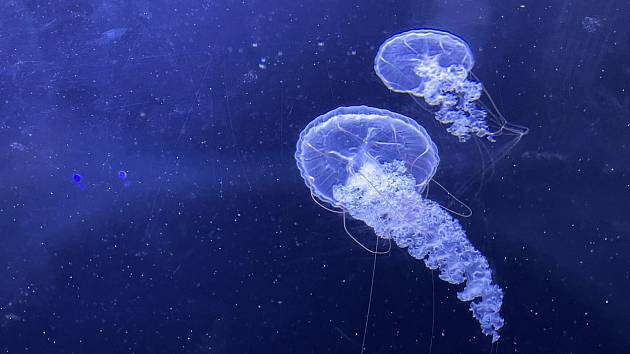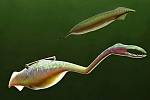Don’t mess with this jellyfish. The centimeter-long creature has 24 eyes and powerful venom
Scientists have found a strange jellyfish with an incredible 24 eyes. The animal is smaller than a human thumb and possesses a highly dangerous poison that could kill even a human.

Click to enlarge
Jellyfish are beautiful, but some are very dangerous. illustrative photo
| Photo: CTK/Hasan Ay/Anadolu Agency/ABACAPRESS.COM
The creature, which experts have officially named Tripedalia maipoensis, was discovered in Hong Kong’s Mai Po nature reserve. Jellyfish although it is only a centimeter and a half long, it is still better to avoid it – its sting can be highly dangerous.
The marine animal was found by researchers from wildlife organization WWF Hong Kong, Ocean Park Hong Kong and the University of Manchester in a mud pond while collecting samples during the summers of 2020, 2021 and 2022.
The team collected the jellyfish they found and analyzed their DNA and tissue to determine if they were a new species.
According to the scientists, the discovery of the jellyfish points to the rich diversity of marine life in the region and the potential for its further discovery in Hong Kong and China’s coastal waters.
“Although currently known only in Mai Po, we believe that this species is also widespread in the adjacent waters of the Pearl River estuary because they are connected to the estuary by a tidal channel,” the New York Post quoted the study’s author, a professor in HKBU’s Department of Biology, as saying. Qiu Jianwen.
Faster and more dangerous
The jellyfish has a transparent and colorless body with three tentacles measuring up to ten centimeters. It is also interesting that the ends of its tentacles are flat, somewhat resembling a boat paddle, which allows it to swim faster than other jellyfish. But the most interesting thing is that it has 24 eyes, which are divided into four groups of six and located on each side of the body. Two eyes have lenses that make it possible to form an image, the other four are only able to perceive light.
The animal belongs to the class of so-called square jellyfish (Box Jellyfish), whose poison can be deadly even for humans. The tentacles release a toxin that can cause paralysis, cardiac arrest, and even death within minutes of being stung.
“A group of jellyfish known for their cube-shaped bell is one of the most venomous groups of animals on the planet,” the researchers wrote in a study published in the academic journal Zoological Studies, according to the Daily Mail.
Mosquitoes and snails are also killers
Perhaps contrary to expectations, they are considered to be by far the most dangerous group of animals in the world mosquitoes, who account for an incredible 725 thousand to a million deaths per year. They are especially dangerous because they are very frequent carriers of diseases. When mosquitoes suck human or animal blood, they transmit infectious pathogens along with viruses, bacteria and parasites.
Freshwater snails are again surprisingly in second place, mainly because they are carriers of parasitic worms known as flukes. Humans can become infected with them from contaminated water, and the parasitic disease caused by them is responsible for up to 200,000 deaths a year. The third place is occupied by snakes, which are responsible for up to 138 thousand deaths per year due to their venom. By far the deadliest is the particularly aggressive peacock viper.






